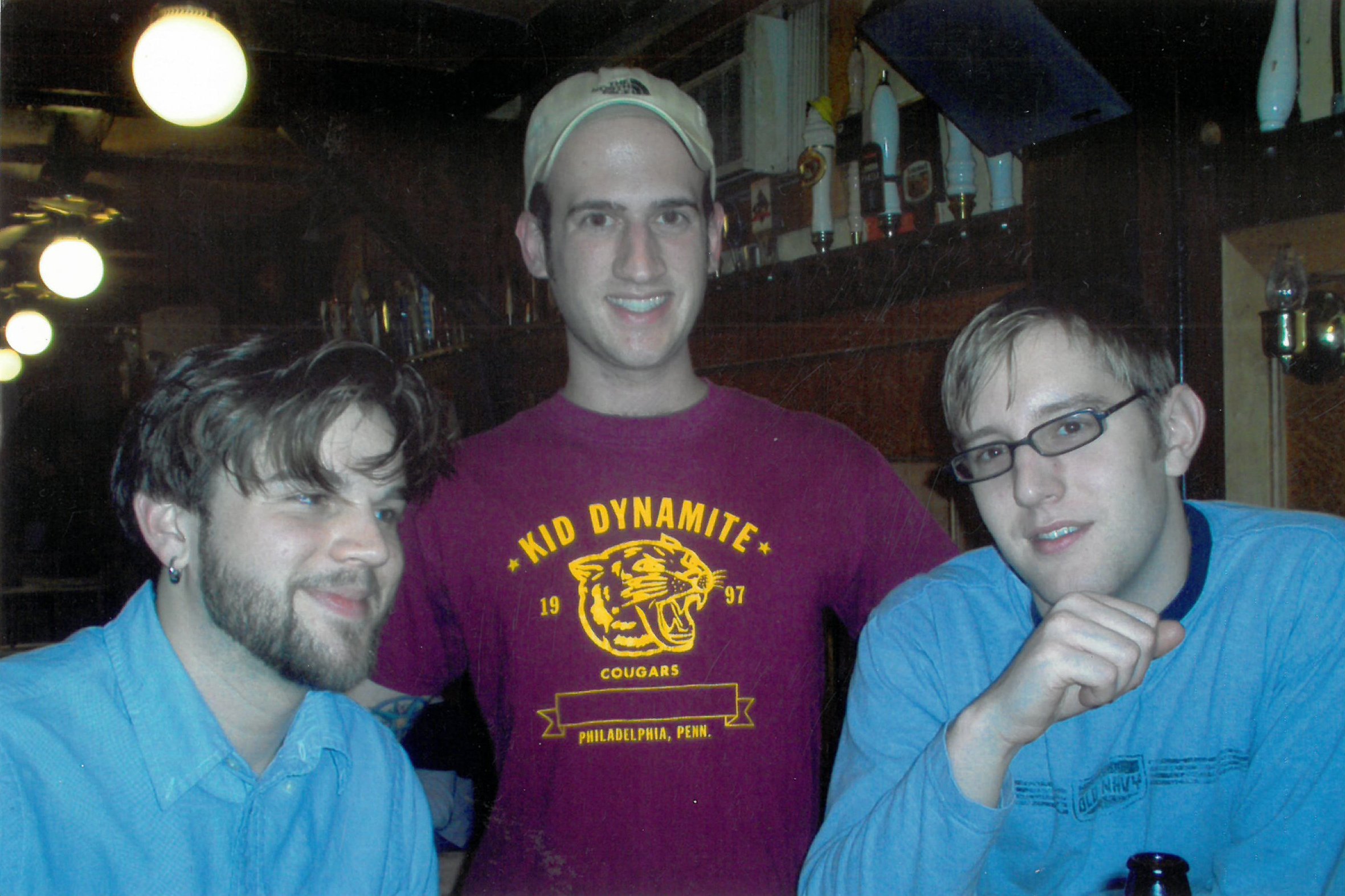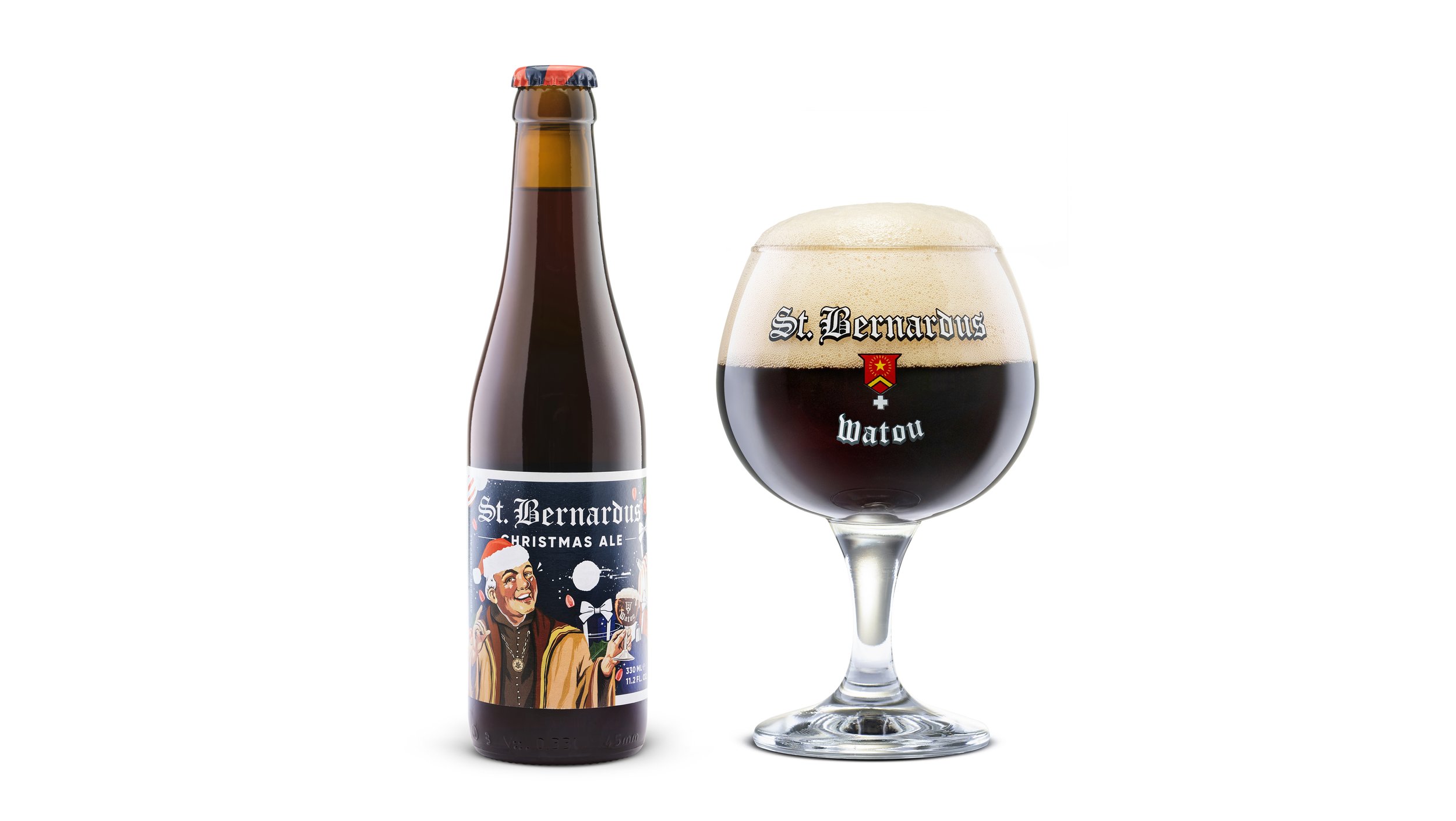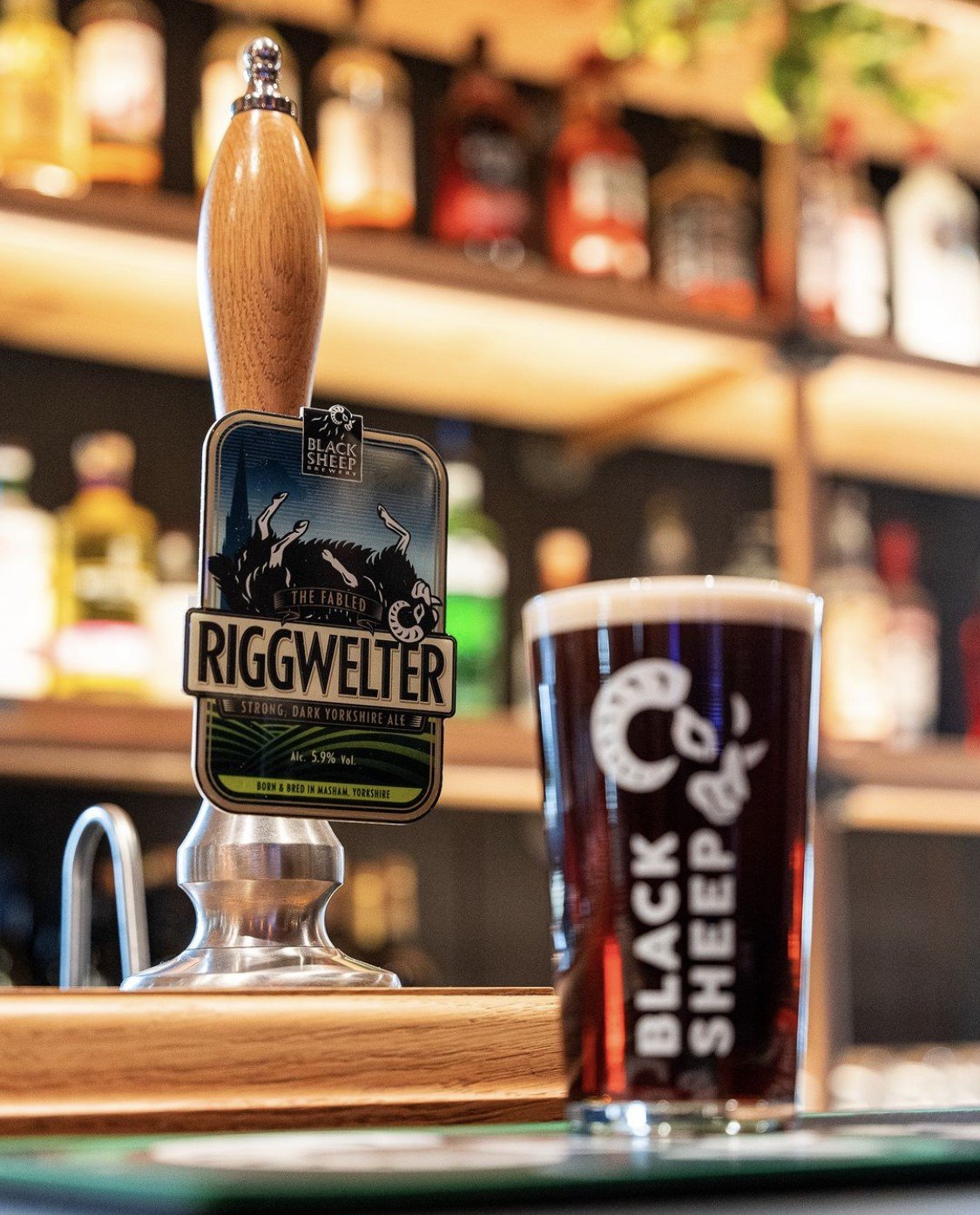Mahar’s Public Bar, c. 2008. Image source: All Over Albany
With a bit of anticipation and uneasiness, two college students approached the bar at Mahar’s in Albany, New York, and ordered half and half’s. Though they likely knew Mahar’s Public Bar was a great place for beer, they may not have known it was also not highly regarded for its service. The barkeep that evening, Bill, was the least welcoming of all the staff.
Clearly irritated by the order, Bill asked the duo what beers they wanted to be used for half dark, half pale layered drink. Thrown by the question, one of them nervously replied, “Guinness and Budweiser.” His response sounded more like a question.
Bill, in many ways a real-life version of the snooty comic bookstore owner from The Simpsons, briskly replied that the pub did not carry Budweiser, but if they did, he would never make that drink with it. Thanks to this warm welcome, it would not be surprising if the students retreated to their more familiar college dive bar, well-stocked with Natty Ice, forever turned off by the lure of better beer.
Despite the unwelcoming culture, Mahar’s was one of the very few places in the region to serve a wide array of beer during its day, and it managed to have a positive impact on many people. I was one of them.
I moved to Albany shortly after getting into beer. Though I didn’t choose my first apartment due to its proximity to Mahar’s, it was a huge perk. Like, Billy Fuccillo huge (IYKYK). It was less than a minute away on foot from my front door.
I moved to town for graduate school in the early aughts, and in addition to working toward two advanced degrees, I had also set a goal of finishing the Mahar’s beer tour. You achieved this by drinking 200 different beers (or maybe it was 500. See below), and could only have four counted toward your tour each day. (Though 200 finished the tour and earned you a case of beer, with 500, you got your name on a plaque. Along the way, 50 earned you a t-shirt and 125 got you your own mug behind the bar. This is my recollection of the program, and it has been a while. So, forgive me if I didn’t nail it. You get the idea though.)
When you got to the bar, you made your way to the back where an old DOS computer kept track of what you drank, and you could print out a list of the day’s offerings minus what you already had on your tour. A primitive Untappd, I suppose. I don’t remember much in life, but I can tell you my tour code was 19570. I recently found one of these sheets that confirms the number.
A snipet from my Mahar’s beer tour menu for May 14, 2005.
I have subsequently learned that beers people drank may not have always made it into the system. This apparently depended on several things, including whether the staff liked you and/or liked what you drank. Daniel Kravitz was a Mahar’s patron, and he told me his experience, saying, “there was a running joke that Bill wouldn't cross off beers from the list that he didn't respect and for some strange reason Hoegaarden Wit would always be on my list. I must've drank that beer twelve times before it finally got crossed off.”
I enjoyed the tour, but many criticized it as they felt it was distracting. In hindsight, I completely understand this perspective. However, as an introvert who often went to Mahar’s alone, this distraction was likely a helpful social crutch for me.
Despite what I said above, here’s some evidence to show I actually went to Mahar’s sometimes with my friends.
I never really felt the wrath of the employees there, personally. I was polite, quiet and curious. I did get called a hophead once for ordering and admitting that I liked Victory Prima Pils.
The one time I did catch a bit of attitude was when Smithwick’s came to the US. As crazy as it sounds now, people were excited about it at that time. I walked in one night when they had it on tap and asked Bill for a “Smith-wicks”. He obnoxiously replied, “you mean Smit-icks?” I wasn’t having a particularly good day and angrily fired back, “I don’t care how you say it, can you just get me the beer?” From then on, Bill treated me much better. I wouldn’t say we ever had a laugh together or anything pleasant like that, but he gave me some respect, which, you know, is what he should’ve shown all customers. Nonetheless, I felt like I was accepted. Others did too.
Shaun Pekar tells me, “getting to drink at Mahar’s felt a bit like getting into some secret club where beer was different.” Now a brewer at Wayward Lane Brewing, Shaun says looking back, “in retrospect, I was embarking on a journey that very clearly was leading me to my current career path.”
Shaun learned a lot at Mahar’s. And as he says, it was a place of many firsts. “My first Lambic, my first Rauchbier, my first pint of real ale,” he reminisces. Daniel learned a bit as well. He explains, “I learned about proper glassware and how to pour a beer. I picked up Michael Jackson books that were laying around and would read them…I learned that there are too many beers to say you don't like beer.”
“I want to be perfectly clear in saying that the bartenders there
ranged from curt to downright unpleasant in their mannerisms.”
Online comment on Mahar’s
Though everyone I have recently spoken to about Mahar’s has an overall positive view of the place, they all clearly are aware it was not so easygoing for others, and pretty much all reviews, articles, etc. that can still be found online convey that. It’s astounding the number of times the word “surly” appears.
One entry on BeerAdvocate reads, “service is well, notorious. Know what you want to order, order it, say please and thank you, leave the bar and go sit down/stand with your friends.” It’s reminiscent of “The Soup Nazi” episode of Seinfeld.
A more blunt comment on Yelp describing Mahar’s says, “Staff is ridiculously rude, so much so that ordering a drink is usually an unpleasant ordeal. Beer selection is impressive, but definitely not worth dealing with the trollish bartenders.”
Some recognized that the service did vary a bit, as shown in the following comment from an article about Mahar’s in the local Albany newspaper. The comment reads, “I want to be perfectly clear in saying that the bartenders there ranged from curt to downright unpleasant in their mannerisms.”
To be fair, there was one great bartender during my time going there. His name was Kieran, and he typically worked Thursday nights. Accordingly, more often than not, that was the night I was there.
A sign of the times and vibes at Mahar’s. Image source: Yelp.
Owner Jim Mahar was nearly as brusque, but not as rude as Bill. Nonetheless, it’s interesting that Jim and some of his staff treated customers the way they did since he regularly told a story of being turned away at a Sam Smith’s pub in England. He described arriving at the pub as they were closing for the afternoon hours as they used to do in England. It appeared to him that the staff and patrons inside were still drinking, amused by the American being turned away. This was enough to make him permanently and passionately deride Sam Smith’s beer (though he still sold it). Yet he created a space that in some ways mimicked the less desirable elements of Sam Smith’s pubs, known for their strict rules and questionable hospitality.
--
By the end of the aughts, those looking for great beer in the Albany Capital District had options. While Mahar’s still excelled in a couple of areas like their cask service and their in-depth knowledge, other bars carried a solid selection without the attitude and without the old man vibes. Further, the beer nerd market was shifting toward new American beers that were highly hopped. Though Mahar’s stocked a variety of beer, the low carbonation, cellar temperature ale that had been a strong selling point for the pub was no longer as appealing as the beers battling out the IBU wars available in other places around town.
Unsurprisingly stubborn, Jim Mahar did little to change his bar that he opened in 1989. While I appreciated that (not including the shitty service), many understandably did not. They moved on.
A few short years later in 2013, the Mahar’s building was sold and they were forced out. According to local news reports at the time, this news was unexpected to Mahar. Others disputed that. Either way, Mahar indicated it was not an amicable closure.
Mahar had already set up another pub not too far away in Castleton in 2010, but that only lasted until 2014. He passed away shortly afterward in 2015 at the age of 65.
He certainly had his critics, and for good reason, but it was quite an accomplishment to run the kind of establishment he did, where he did, at the time he did, and for over twenty years.
For a period, those on their beer tour were able to continue the journey in town at the Allen Street Pub. My understanding is that came to an end when ownership of this pub changed hands sometime after.
Mahar’s was replaced by the Madison Pour House, which is still in operation today.
Delaware Supply owners Lauren Slezak and Colin Pratt. Image source: Instagram.
While Mahar’s is now gone for over a decade, there’s a new generation of beer drinkers in Albany that have captured some of the better attributes of the now closed pub, leaving the hostile environment and toxic attitudes in the past. Notably, this includes Delaware Supply, opened by Lauren Slezak and Colin Pratt in 2017.
While the diversity of the beers carried by Mahar’s often meant there was something for everyone, this may have been a happy coincidence as opposed to an intentional effort to be welcoming. On the contrary, Delaware Supply aims to be welcoming to all, curious college kids included. That means a diversity in beer styles, supplemented with other choices like cider, natural wine, kombucha and NA beverages.
Lauren and Colin are both incredibly polite and happy to offer their knowledge to their patrons without belittling them. They actually enjoy sharing the things they love as opposed to being inhospitable gatekeepers. As an example, Colin says, “serving Orval to somebody for the first time is joyful for everybody involved.”
The something for everyone ethos carries over to their streamlined, but mouth-watering food program. It’s streamlined because Delaware Supply is not a restaurant, but they want you to have easy access to a delicious bite if you’re in need. (Mahar’s also had a few things to eat for a period (see menu above) but I can’t say from experience if it was any good.) Lauren’s goal is to be “simple, fresh, tasty, and a little bit different”. On the menu, you’ll find sandwiches like spicy capocollo with peppadew cheddar spread and pickled celery on a toasted ciabatta roll, tinned fish, olives and other snacks like that.
“Serving Orval to somebody for the first time is joyful for everybody involved.” Colin Pratt, Delaware Supply. Image source: Instagram.
They’ve been doing gravity pour cask service periodically for a while and say that when word got out that they were serving cask ale, people started showing up that they had never seen before. Turns out, many of Mahar’s customers still live in the area and they still like cask beer. All these new folks who show up for cask beer mention Mahar’s. That made them have the realization that they were filling a gap in the market, in part, because of Mahar’s closure.
After an event where Suarez Family Brewery temporarily installed a handpump at the bar, Lauren and Colin saw how easy it could be to have their own permanent setup. Gravity casks have their place, but pulling pints from a handpump (that they accessorize with a sparkler), can’t be beat.
Delaware Supply gives a nod to the legacy of Mahar’s with a special drink that was occassionally served at the shuttered pub. The drink is a blend of two Coniston beers. At one time, the British brewery did this themselves, blending and packaging their Bluebird Bitter and Old Man Ale to produce a beer they referred to as ‘Opium’. Opium could not be imported into the US with that name. So, Mahar’s would bring in Bluebird Bitter and Old Man Ale and blend the two themselves.
Lauren and Colin call it “Mahar’s Special Blend” for two reasons. First, they’re not going to call it Opium. Second, Lauren tells me, “it reminds people that we’re connected to the greater Albany craft beer scene that Mahar’s really established for the rest of us.”
- -
Albany has had a great beer culture for a long time. It punches well above its weight for a small city in Upstate New York. Mahar’s was an incredibly important part of its culture and history, and was an influential place for myself and many others. Delaware Supply is doing this for a newer generation, and with that, the evolution of Albany as a great beer town continues, for the better at the moment.

































